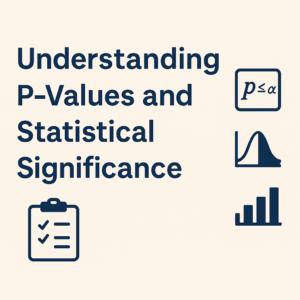In the age of data, numbers alone aren’t enough. To extract meaning, uncover trends, and communicate insights effectively, data visualization becomes essential. Whether you’re presenting sales reports, analyzing customer behavior, or exploring scientific data, visualizations turn raw data into compelling, understandable stories.
In this blog, we’ll break down what data visualization is, explore the most widely used tools, and outline key best practices to ensure your visuals are clear, accurate, and impactful.
📌 What is Data Visualization?
Data visualization is the graphical representation of information and data. By using elements like charts, graphs, maps, and dashboards, it enables users to see patterns, trends, and outliers in large data sets.
🔍 Why It Matters:
- Enhances understanding: Easier to interpret than spreadsheets or tables.
- Speeds up decision-making: Helps stakeholders quickly grasp key metrics.
- Reveals insights: Helps identify trends, correlations, and anomalies.
🛠️ Common Data Visualization Tools
Here’s a breakdown of the most popular tools used in data visualization:
1. Microsoft Excel
- Best for: Basic visualizations and quick reports.
- Features: Bar/line charts, pie charts, pivot charts, conditional formatting.
- Use Case: Internal reporting, quick insights.
2. Tableau
- Best for: Interactive dashboards and enterprise reporting.
- Features: Drag-and-drop interface, real-time analytics, strong community.
- Use Case: Business intelligence, executive dashboards.
3. Power BI
- Best for: Integration with Microsoft ecosystem.
- Features: AI-powered insights, custom visuals, live dashboards.
- Use Case: Enterprise reporting, finance dashboards.
4. Google Data Studio / Looker Studio
- Best for: Free web-based reports.
- Features: Real-time data connectors, Google Sheets integration.
- Use Case: Web analytics, marketing performance tracking.
5. Python (Matplotlib, Seaborn, Plotly)
- Best for: Programmers, custom visualizations.
- Features: Full control over aesthetics and data manipulation.
- Use Case: Research, automated data reporting, data science.
6. R (ggplot2, Shiny)
- Best for: Statistical visualization and data exploration.
- Features: Grammar of graphics, reproducibility.
- Use Case: Research, advanced statistical modeling.
✅ Best Practices for Effective Data Visualization
Creating a chart is easy. Making it effective and insightful takes practice. Follow these principles to ensure your visualizations serve their purpose:
1. Know Your Audience
- Tailor complexity and content to the user’s level (executive vs. analyst).
- Use relevant visuals that speak their language.
2. Choose the Right Chart Type
| Chart Type | Best For |
|---|---|
| Bar Chart | Comparing quantities across categories |
| Line Chart | Trends over time |
| Pie Chart | Showing proportions (use sparingly!) |
| Heatmap | Correlation, intensity |
| Scatter Plot | Relationship between two variables |
| Histogram | Distribution of data |
3. Use Color Wisely
- Stick to a consistent palette.
- Use contrast to highlight key points.
- Avoid red-green combinations for accessibility.
4. Don’t Overload
- Remove unnecessary gridlines, 3D effects, or labels.
- Focus on clarity, not decoration.
5. Label Clearly
- Add titles, axis labels, legends, and data sources.
- Use annotations to emphasize key takeaways.
6. Tell a Story
- Every visual should answer a question or support a decision.
- Organize dashboards or reports in a logical flow.
🧠 Real-World Example
Imagine you’re analyzing sales performance across regions:
Bad Visualization:
- 3D pie chart with 10 segments, no labels, tiny legend
Good Visualization:
- Clean bar chart comparing sales by region with percentage labels and clear title:
“Q2 Sales by Region – North Outperforms”
💡 Final Thoughts
Data visualization is both an art and a science. As datasets grow and decisions get faster, your ability to turn numbers into visual stories becomes a competitive skill.
By mastering tools like Tableau, Excel, or Python—and applying best practices—you’ll ensure your data doesn’t just speak… it persuades.
